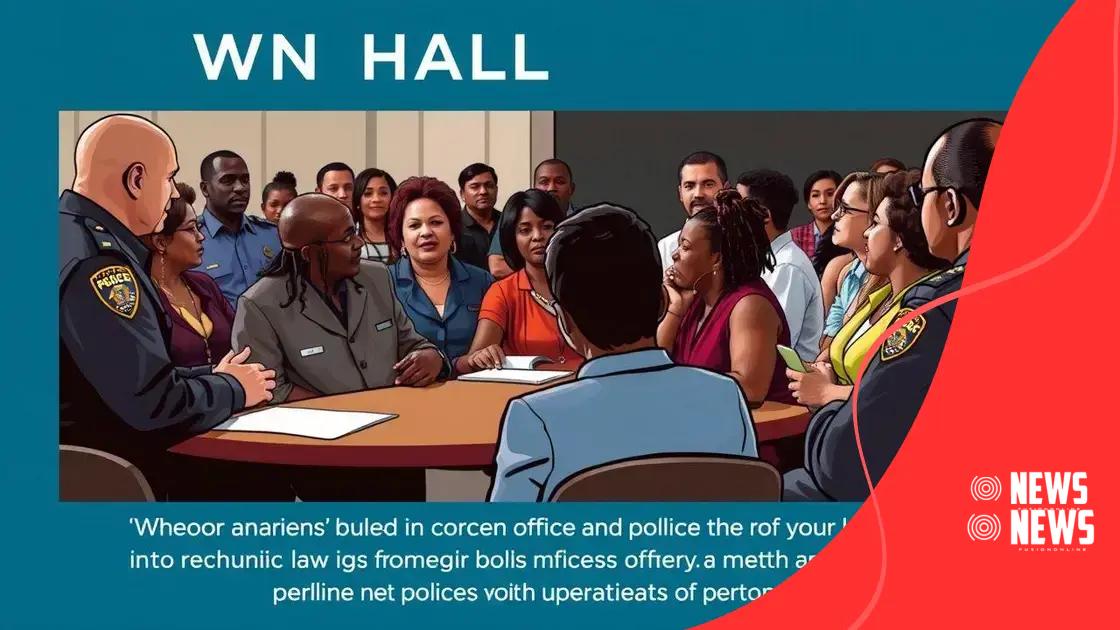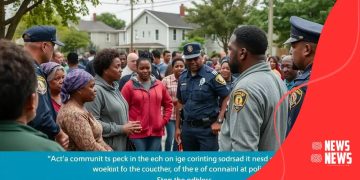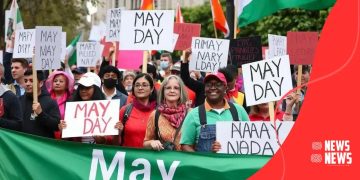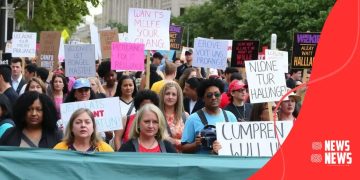Legal reviews of protest law enforcement can change outcomes
Legal reviews of protest law enforcement assess police actions to ensure accountability, protect civil liberties, and adapt strategies based on community needs and evolving societal norms.
Legal reviews of protest law enforcement are essential for ensuring justice and accountability during public demonstrations. Have you ever wondered how these evaluations can alter the course of events on the ground?
Understanding the legal framework for protest law enforcement
Understanding the legal framework for protest law enforcement is vital for both officers and the public. This framework governs how protests can be managed without infringing on rights.
Many people are unaware of the specific laws and regulations that guide police actions during protests. Knowing these rules can encourage peaceful demonstrations and promote respectful interactions.
The Constitution and Protests
The First Amendment grants citizens the right to assemble peacefully. This is crucial for protecting democratic values and allowing voices to be heard. However, this right comes with certain responsibilities.
Law enforcement agencies must strike a balance between maintaining public safety and respecting individuals’ rights. Proper training helps officers understand these nuances.
Key Considerations in Enforcement
- Understanding local ordinances that might affect protests.
- The necessity of permits for larger gatherings.
- Procedures for dispersing crowds legally.
- Respecting the rights of bystanders and protestors alike.
When law enforcement is equipped with knowledge of these legal parameters, it can enhance the safety of both protestors and the community. Educated officers are less likely to overreact and more likely to facilitate peaceful interactions.
Community advisory boards can play a role in shaping law enforcement’s approach to protests. Engaging the community helps align police tactics with public expectations. Dialogue between law enforcement and citizens fosters trust.
Overall, understanding the legal framework for protest law enforcement ensures that protests can occur freely while maintaining order. The law serves as a guide for appropriate actions during these critical moments.
Key cases influencing law enforcement reviews
Key cases influencing law enforcement reviews have shaped how police respond to protests. Understanding these cases is important for grasping current practices. They highlight the intersection of law and social order, guiding police actions during public gatherings.
One landmark case is Miranda v. Arizona, which established the requirement for police to inform suspects of their rights. This case is a cornerstone in protecting individuals during encounters with law enforcement.
Influential Decisions in Recent History
In addition to Miranda, cases like Graham v. Connor redefine the use of force by police. This ruling emphasizes that police must use a reasonable standard when considering how to respond during protests. Knowing these guidelines helps officers make better choices in high-pressure situations.
- The impact of community standards on police tactics.
- How judicial outcomes shape training programs for officers.
- The role of public opinion on court cases.
Another impactful case is District of Columbia v. Heller, which focused on the rights of individuals to bear arms. This decision influences how law enforcement approaches armed protests, creating a framework for officers.
Furthermore, United States v. Nixon showed that no one, not even the president, is above the law. Police must operate under the same principles of accountability and transparency.
Understanding these key cases ensures that law enforcement can protect rights effectively while maintaining order. The evolving nature of law must be reflected in police training and policies.
The role of public opinion in shaping policy

The role of public opinion in shaping policy is critical in guiding how law enforcement responds to protests. When communities voice their concerns, it leads to changes in strategies and practices.
Public sentiment can influence legislation and law enforcement policies. Decision-makers pay attention to what the people want. This connection ensures that law enforcement remains accountable to the communities they serve.
The Power of the People
Public opinion can mobilize change quickly. For example, many protests have led to legislation that addresses police accountability. When citizens express their views, it can lead to meaningful discussions about reform.
- Media coverage amplifies public sentiment.
- Social media platforms allow for quick and widespread sharing of opinions.
- Grassroots movements often rally support for policy changes.
Additionally, surveys and polls often reflect public concerns about safety and rights. Law enforcement agencies often take these results seriously, as they can influence resource allocation and strategic planning.
Communities can engage with law enforcement through forums and meetings. This builds trust and allows for open dialogue, helping shape policies that reflect the people’s needs. Policies developed in this way are more likely to gain public support.
In essence, understanding public opinion helps create a balanced approach to law enforcement. This balance is key to maintaining peace and respecting the rights of all citizens during protests.
How legal reviews can enhance civil liberties
How legal reviews can enhance civil liberties is an important topic in today’s society. These reviews assess how laws and policies impact people’s freedoms and rights. By examining police practices during protests, we can ensure that individual rights are protected.
Legal reviews serve as a check on law enforcement actions. They help identify cases where police may have overstepped their boundaries. Understanding this process can empower citizens to advocate for their rights effectively.
The Importance of Accountability
When law enforcement agencies are held accountable, it leads to improved practices. Legal reviews can uncover instances of excessive force or discrimination. This transparency is vital for building trust between the community and law enforcement.
- Reports from legal reviews can lead to significant reforms.
- Training programs can be updated based on findings.
- Public awareness increases through documented cases.
Moreover, legal reviews can highlight the need for better policies. Recommendations from these reviews can lead to new laws or adjustments to existing regulations. This process is essential for adapting to the needs of society.
Engaging the community in discussions about legal reviews strengthens civil liberties. When citizens understand how these evaluations operate, they are more likely to participate in advocacy efforts. Knowledge leads to empowerment.
Ultimately, the connection between legal reviews and civil liberties is clear. These assessments play a key role in ensuring that individuals’ rights are respected and upheld, especially during challenging times.
Future trends in protest law enforcement and its evaluations
Future trends in protest law enforcement and its evaluations are shaping how communities and police interact. As society evolves, so do the methods used to manage public demonstrations. Understanding these trends helps us prepare for the challenges ahead.
One of the significant trends is the increasing use of technology in law enforcement. Drones and body cameras are becoming standard tools. They provide real-time data and help ensure accountability. This shift is crucial in enhancing transparency during protests.
The Impact of Social Media
Social media also plays a vital role in shaping protest law enforcement practices. Platforms like Twitter and Facebook allow organizers to communicate quickly and efficiently. This has changed how police prepare for and respond to protests.
- Real-time updates can help manage crowd safety.
- Public sentiment can be gauged through online discussions.
- Police can monitor social media trends to anticipate potential issues.
Another trend is the focus on community policing. Law enforcement agencies are recognizing the importance of building trust with the community. Engaging with citizens before protests can foster a collaborative atmosphere. This can lead to less tension during events.
Moreover, there is growing emphasis on de-escalation strategies. Training programs are evolving to prioritize non-confrontational methods. This approach aims to reduce the risk of violence and maintain public order. Communities benefit when police officers are trained to handle situations calmly and respectfully.
As we look ahead, the integration of public input in evaluating police practices is essential. Legal reviews will continue to shape policies, ensuring that civil liberties are upheld alongside public safety.
FAQ – Questions about Protest Law Enforcement and Evaluations
What is the role of legal reviews in protest law enforcement?
Legal reviews help assess police actions during protests, ensuring accountability and protecting civil liberties.
How can technology improve protest management?
Technology, like body cameras and drones, enhances transparency and aids in monitoring crowd behavior during protests.
Why is community engagement important for police?
Community engagement fosters trust, improves communication, and helps law enforcement better understand public concerns.
What future trends are expected in protest law enforcement?
Future trends include increased use of technology, emphasis on de-escalation strategies, and more community collaboration.





